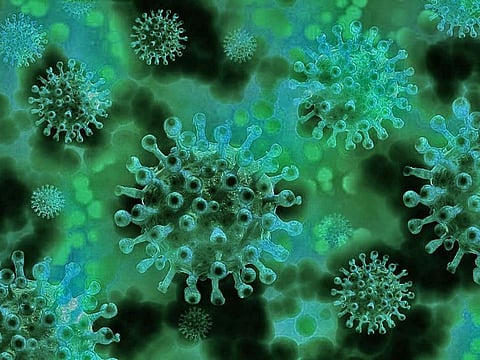NeoCoV: Here’s what we know about the coronavirus
It’s not a new variant of COVID-19 virus and has not been found in humans so far

A coronavirus found among bats in South Africa has triggered warnings in a section of media that it could be deadlier than COVID-19. NeoCoV coronavirus, which according to Chinese scientists, has the potential to mutate and infect humans. So far, there have been no reports of a NeoCoV infection in humans.
Doctors and scientists in India have asked people not to panic, saying that this is not a new coronavirus nor is it a new discovery. Several of them tweeted that such mutation is extremely rare.
The virus will be a threat only when it mutates. It still hasn’t happened since it was first found in 2013, but Wuhan University researchers, who studied it, believe it’s only one step away from mutating.
The World Health Organisation has tamped down reports saying that NeoCoV’s potential to become a threat can only be confirmed with further studies.
Here’s what we know about NeoCoV.
What’s NeoCoV?
NeoCoV is a coronavirus, not a variant. A 2020 research paper, published by the National Library of Medicine, says it’s the closest relative of the Middle East Respiratory Syndrome coronavirus (MERS-CoV).
“It is only one mutation away from becoming dangerous for humans,” researchers from the Chinese Academy of Sciences and Wuhan University said in a paper published on preprint website bioRxiv.
Where and how was it found?
NeoCoV was discovered in a population of bats in South Africa, a Tass news agency report said. The coronavirus came to the attention of scientists in 2013. A year later, the American Society for Microbiology published a research paper on MERS-CoV, which was emerging at the time. The paper said the scientists had “determined the full genome sequence of a CoV directly from faecal material obtained from a South African Neoromicia capensis bat (NeoCoV).” And the NeoCoV genome was 85 per cent identical to MERS-CoV.
The WHO says that coronaviruses are generally found in animals, particularly in bats, which can be a natural reservoir for many viruses. Wild animals are the source of more than 75 per cent of all emerging infectious diseases in humans, many of which are caused by novel viruses, it adds.
What’s the similarity with the COVID-19 virus?
The infection mechanism is the same. Like the SARS-CoV-2, which causes COVID-19, NeoCoV and its close relative, PDF-2180-CoV can also use some types of ACE2 (angiotensin-converting enzyme 2) to gain entry into cells. That means NeoCoV can penetrate human cells the same way as SARS-CoV-2. But not yet. For that, it needs to mutate.
The Chinese scientists said their study “demonstrates the first case of ACE2 usage in MERS-related viruses”.
How dangerous is NeoCoV?
Right now, it’s not a threat. But Chinese scientists say it will become a threat when it mutates like the COVID-19 coronavirus. The ability of NeoCoV to bind to some types of ACE2 to gain entry into cells makes it a potential biosafety threat to humans, if it mutates.
“Considering the extensive mutations in the RBD regions of the SARS-CoV-2 variants, especially the heavily mutated Omicron variant, these viruses may hold a latent potential to infect humans through further adaptation via antigenic drift,” the Chinese research paper said.
Experts at the Russian Research Centre of Virology and Biotechnology Vector, said there is no reason to panic.
“At the moment, there is no talk about the emergence of a new coronavirus, ready to actively spread in the human population. The risks identified by Chinese experts are of a potential nature and require further study,” according to Vector’s statement which was quoted by RIA Novosti.
Should we be worried?
Not at all. NeoCoV, which was first discussed in 2013, is only spreading among animals, and has not mutated enough to jump to humans. Till today, no known cases of NeoCoV transmission in humans have been reported.
So far, there has been no evidence of how transmissible or fatal NeoCoV would be. Laboratory tests suggest that NeoCoV’s ability to infect human cells is poor, The Independent said.
“We need to see more data confirming human infection and associated severity before getting anxious,” Lawrence Young, a virologist at Warwick University in the United Kingdom, told The Independent. “The preprint [study] suggests that infection of human cells with NeoCoV is extremely inefficient.”
What does the WHO say?
The WHO said more clarity is required on the threat posed by NeoCoV. “Whether the virus detected in the study will pose a risk for humans will require further study,” the world health body told the Tass news agency, adding that its experts were aware of this research.
The WHO said it “works closely” with the World Organisation for Animal Health (OIE), the Food and Agriculture Organisation (FAO) and the UN Environment Programme (UNEP) in order to “monitor and respond to the threat of emerging zoonotic viruses.”
What do scientists say?
Wuhan researchers acknowledge the need for more research on NeoCoV, and that was echoed by other scientists, who called for close monitoring of bats and other animals affected by viruses associated with MERS-CoV.
Sergey V. Alkhovsky, head of the Biotechnology Laboratory at the Gamleya National Centre on Epidemiology and Microbiology in Moscow, says it’s difficult to assess the dangers.
“It is very difficult to estimate the direct danger of this particular strain. We can state that there is a multitude of these strains circulating in the wild, and we need to study this multitude, this genetic diversity and promote research in this area,” Alkhovsky was quoted as saying at the Scientific Council of the Russian Academy of Sciences.
Sign up for the Daily Briefing
Get the latest news and updates straight to your inbox



